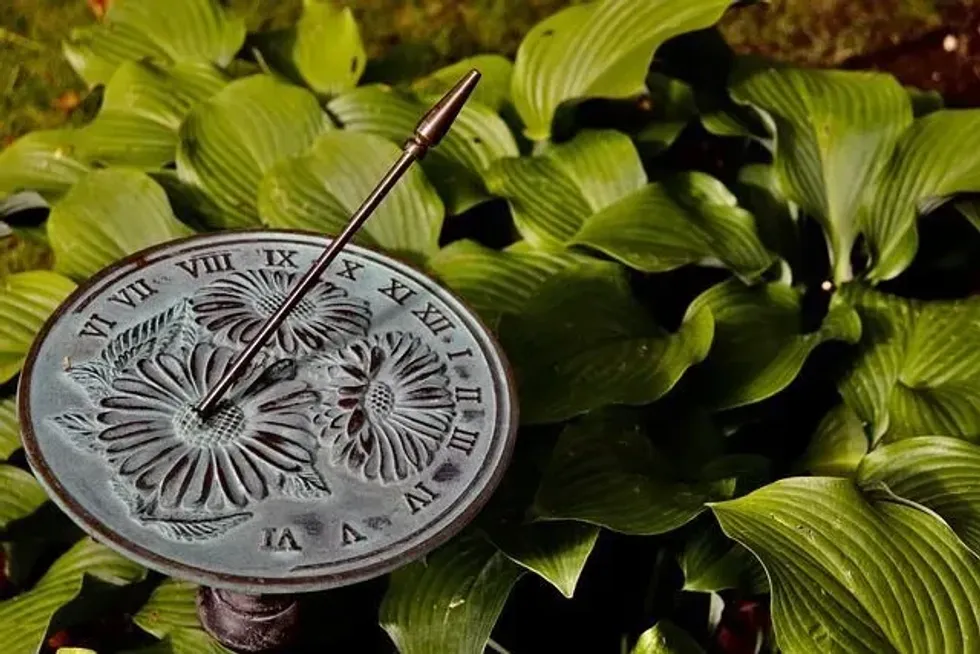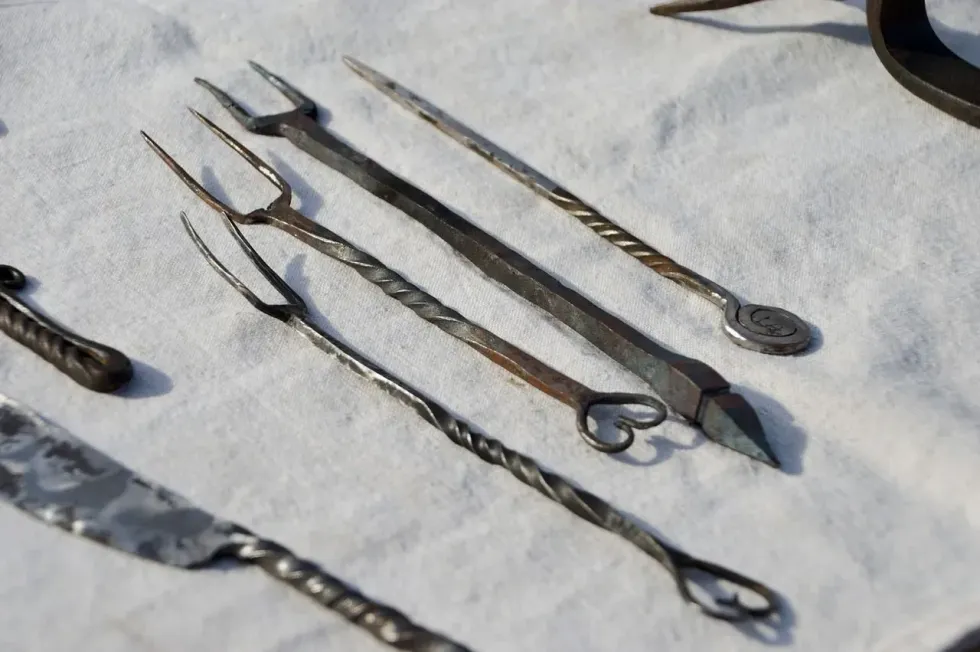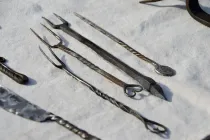71 Medieval Time facts You Probably Didn't Know About This Era
Medieval writers categorized history into periods like the 'Four Empires' or the 'Six Ages.'
The first Europeans who came to America were explorers looking for gold, spices, or adventure. They found all three!
With many events in history, the Middle ages have played an enormous role in shaping our western world. Middle Ages was a time that is often misunderstood.
It is usually thought of as being barbaric and uncivilized. However, there is so much more to this era than meets the eye! In this article, we will be discussing interesting facts about Middle Ages.
About Medieval Times
In European history, the medieval period or Middle ages was approximately between the fifth century and the late 15th century, like the post-classical period of world history. The Middle Ages is often referred to as the 'Dark Ages.'
It was a period when Europe was ruled by kings and queens, who had absolute power over their subjects.
The people lived in fear for their lives daily because many dangers were lurking around every corner: bandits would rob travelers at knifepoint or worse.
Even the government could kill its citizens without trial or punishment.
The Middle East and North Africa came under the rule of the Islamic Empire, the Umayyad Caliphate, after the conquest by the successors of Muhammad.
The culture and life in the Roman empire or city changed immensely in the early medieval period with a decrease in population.
Any Roman temple would get converted to the Christian church, and the city walls were still used.
The feudal society in the Middle ages worked as their King granted new lands known as fiefs to bishops and noblemen.
People in Middle Ages were called serfs. They were like servants to their lords, who owned large estates and land holdings that they worked on for free.
In exchange for this labor service, serfs were given food rations from the lord's estate.
Serfs might get one big meal per week if they were lucky enough.
In the Middle Ages, the lord of an estate could decide how his land would be used.
Lords decided what crops should be planted and where so that there would always be food available for himself and those who worked under him at any given time during each year's growing season.
There was no such thing as antibiotics in the Middle Ages, so even the most superficial infection could kill you. Most people in Middle Ages did not live past the age of 30.
Some people did manage to live relatively long lives in the Middle ages, like King Henry VIII, who lived until he was 58 years old!
Lords and their families lived in castles during Middle Ages. The peasants lived in small villages surrounded by walls to protect them from the lords and their armies.
In the Middle ages, there was no such thing as a democracy. The lord of an estate made all decisions regarding how his land would be used.
There was much less freedom during this era than in our current age because people had very strict rules about what they could do in society.
People during the middle ages had to wear only certain clothing styles when going outside their homes at any given time throughout each day.
The Middle Ages were characterized by a lack of technological advancement and the prevalence of diseases such as smallpox or leprosy.
During the early 15th century, the Iberian Peninsula countries started sponsoring exploration beyond the European boundaries.
Timeline
The middle ages timeline is a story that spans from 500-1500 A.D. This period can be broken down into three main eras: Early Middle Ages (500-1000), High Middle Ages (1000-1300), and Late Middle Age/Renaissance (1300-1500).
350 AD, Barbaric invasions: the Roman lands were invaded by barbaric tribes who stole and wanted to settle in better places.
410 AD, The fall of Rome: Roman Empire was divided into two parts, the western and Eastern Roman Empire (Byzantine). Rome was attacked by Alaric, Visogoth king, for three days.
412 AD, Eastern Roman Empire continued to rule: walls for protection were built around Constantinople to stay safe from invaders. The nest ruler, Justinian I, tried to unit the eastern and western regions but failed.
741 AD, The Muslim invasion stopped: Muslims started conquering the south and barbarians. However, they were pushed by the Frank King, Charles Martel.
768 AD, The rule of Charlemagne: the new Frank King, Charlemagne expands his empire with the expansion of Christianity. Pope Leo III crowns the King as the 'Emperor of Romans.' Castles were being constructed in this period.
840 AD, Kingdom divides: the Roman kingdom was divided into three parts, and kingship was later created.
871 AD, England's Alfred the Great's rule: Alfred captured London and then divided England between the Danes of Vikings and himself.
1000 AD, The feudal systems and city-states: many Italian cities, including Rome, became city-states. Kings gave the land to lords, and lords were free to give the land to knights with peasants working on these lands.
1096 AD, First Crusade: when the Seljuk Turks forbade visits to sacred sites, crusaders obtained Jerusalem city.
1135 AD, Gothic sand stained glass style: Paris' St. Denis Abbey was rebuilt using the gothic style with stained glass windows.
1215 AD, Magna Carta signed: this is a document signed by England's King John, declaring that there were no divine rights given to kings.
1337 AD, 100-year war: a war took place between Frane and England's Edward III.
1347 AD, The black death: Plagues started spreading across Italy.
1429 AD, Joan of Arc: In the 100-year war, Joan wins the Battle of Orleans for the people of France.

Entertainment And Sports In Medieval Times
One of the primary forms of entertainment during the Middle Ages was attending plays at the local theater. These plays were usually based on religious stories from the Bible or classic tales like Cinderella.
Some popular forms of entertainment included watching jousting tournaments, hunting with friends and family, or participating in archery contests.
Since there were no televisions or movie theaters back then, people would have to develop ways to have fun.
As for sports, footraces were very common during the Middle Ages.
One of the most famous footraces ever is the marathon which got its name from a legendary race that took place between a soldier named Pheidippides and a messenger named Thersipus in Marathon, a town in Greece.
This race took place in 490 B.C., and Pheidippides is said to have run from Athens to Marathon to deliver news of a victory against the Persians before collapsing and dying right after he gave his message.
Other popular sports during Middle Ages included wrestling, archery, jousting, and horseback riding.
People were expected to work hard every day just like they do now, but it wasn't always easy because there weren't many jobs available at that time either.
Most people became farmers who grew crops like wheat and barley, which could then turn into bread or beer, respectively.
The Middle Ages was a time when people loved to watch plays and other forms of entertainment. This was especially true in royal courts, where nobles would often put on lavish shows for each other.
The knights in shining armor were a popular topic during this era, and there were even songs written about them.
Everyone wanted to know what life was like as a knight and what kinds of adventures they went on.
Since most people couldn't read or write, they relied on pictures to tell stories.
These paintings and drawings were called 'illuminations,' and you can still see some of them today at various museums worldwide.
People used all sorts of materials to make things back then, including wood, metal, and even cloth.
There weren't any plastic or synthetic materials back then, so everything had to be made from scratch.
Many new things were invented during the Middle Ages, such as the printing press and eyeglasses!
One popular sport during medieval times was called 'jousting.' It involved two riders on horses who would try to knock each other off their horse using a lance.
Since there wasn't any type of currency system like we have now, people would often trade goods and services instead of money.
Court fools, during this era, were called Jesters. These jesters were professional clowns for both noblemen and kings.
Culture During Medieval Times
The culture of the Middle ages was very different from what we see today. One notable change was how people dressed; they wore long dresses made out of silk, while men were expected to wear woolen suits with matching top hats when going outside.
The Catholic church in the Medieval period was the most powerful and dominant institution in Europe and influenced the monarchs.
During the Macedonian Renaissance, a classical learning process blossomed between the 9-11th centuries.
It is usually depicted that the medieval folk were filthy, which is not true. Many medieval people believed that 'cleanliness is next to godliness' and took every opportunity to stay hygienic.
Although Christianity influenced most medieval customs, some were from older religions.
A few curious traditions in different regions of medieval Europe were throwing wheat over the heads of the newlyweds and rolling barrels down a hill on the Eve of Midsummer.
King Edward III incorporated the archery law in medieval England, demanding every male to practice archery every Sunday for two hours under the local clergy's supervision.
The title 'peasants' given to the working class of medieval England was not even invented until the 15th century in France.
Women didn't have as many rights back then as they do today. They couldn't vote or hold public office, but that all changed during the Renaissance era, which began around 1400 AD.
Some historians say there's even evidence showing female rulers existed before Queen Elizabeth I came into power in 1558 CE. Hence, it seems like society has been making progress since those days.
The culture of the Middle ages was very religious. Most people believed in God and went to church every Sunday.
There were also many rules and regulations that people had to follow - like not being able to eat meat on Fridays because it was a day reserved for fasting.
Since most people lived in rural areas, their lives were centered around farming.
They would grow crops like wheat or corn, which they would then use to make bread or other foods.
People in cities didn't have access to fresh produce, so they had no choice but to buy their food from those who lived out in the countryside.
People in the Middle ages usually didn't have much money because many taxes were imposed by kings and queens alike.
Monarchs kept track of how rich people were by collecting taxes called 'feudal dues.'
There weren't any schools for children during the Middle Ages, so if you wanted an education, your parents would have to hire a tutor or send you off to boarding school.
Technological and cultural developments changed the European society that concluded the Late Middle ages and started the early modern period.
FAQs
Q. What are three facts about the Middle Ages?
A. Medieval times were a time of change for many cultures. An increase in trade, new technologies, and improved farming techniques led to better food production methods.
Q. What are medieval times known for?
A. One of the most notable aspects of medieval times is the knights in shining armor. These were brave warriors who would protect their King and country from harm.
Q. How was life in medieval times?
A. Life during medieval times was difficult.
Q. Which invention was named after a medieval king?
A. The telescope was invented in 1608 by a man named Hans Lippershey. It was named after the King of England at the time, James I.
Q. When were medieval times?
A. The medieval era began in 800 AD and lasted until 1485.
Q. Which was one contributing factor to the growth of medieval?
A. The growth of medieval towns was due to many factors, one being the increase in population.
Q. How to address royalty in medieval times?
A. A person would address royalty by using their title and a form of the word 'you.'
Q. Which conditions characterized early medieval Europe?
A. This period is marked by the spread of Christianity throughout the continent, the rise of new civilizations in Asia and Africa, and the beginning of the Renaissance era.
Q. When did medieval times end?
A. The medieval era ended in 1485 when a man named Henry Tudor became King of England.
We Want Your Photos!
More for You
Bachelor of Engineering specializing in Aeronautical/Aerospace Technology, Master of Business Administration specializing in Management

Arpitha RajendraBachelor of Engineering specializing in Aeronautical/Aerospace Technology, Master of Business Administration specializing in Management
With a background in Aeronautical Engineering and practical experience in various technical areas, Arpitha is a valuable member of the Kidadl content writing team. She did her Bachelor's degree in Engineering, specializing in Aeronautical Engineering, at Nitte Meenakshi Institute of Technology in 2020. Arpitha has honed her skills through her work with leading companies in Bangalore, where she contributed to several noteworthy projects, including the development of high-performance aircraft using morphing technology and the analysis of crack propagation using Abaqus XFEM.
Disclaimer
1) Kidadl is independent and to make our service free to you the reader we are supported by advertising. We hope you love our recommendations for products and services! What we suggest is selected independently by the Kidadl team. If you purchase using the Buy Now button we may earn a small commission. This does not influence our choices. Prices are correct and items are available at the time the article was published but we cannot guarantee that on the time of reading. Please note that Kidadl is a participant in the Amazon Services LLC Associates Program, an affiliate advertising program designed to provide a means for sites to earn advertising fees by advertising and linking to Amazon. We also link to other websites, but are not responsible for their content.
2) At Kidadl, we strive to recommend the very best activities and events. We will always aim to give you accurate information at the date of publication - however, information does change, so it’s important you do your own research, double-check and make the decision that is right for your family. We recognise that not all activities and ideas are appropriate for all children and families or in all circumstances. Our recommended activities are based on age but these are a guide. We recommend that these ideas are used as inspiration, that ideas are undertaken with appropriate adult supervision, and that each adult uses their own discretion and knowledge of their children to consider the safety and suitability. Kidadl cannot accept liability for the execution of these ideas, and parental supervision is advised at all times, as safety is paramount. Anyone using the information provided by Kidadl does so at their own risk and we can not accept liability if things go wrong.
3) Because we are an educational resource, we have quotes and facts about a range of historical and modern figures. We do not endorse the actions of or rhetoric of all the people included in these collections, but we think they are important for growing minds to learn about under the guidance of parents or guardians.







